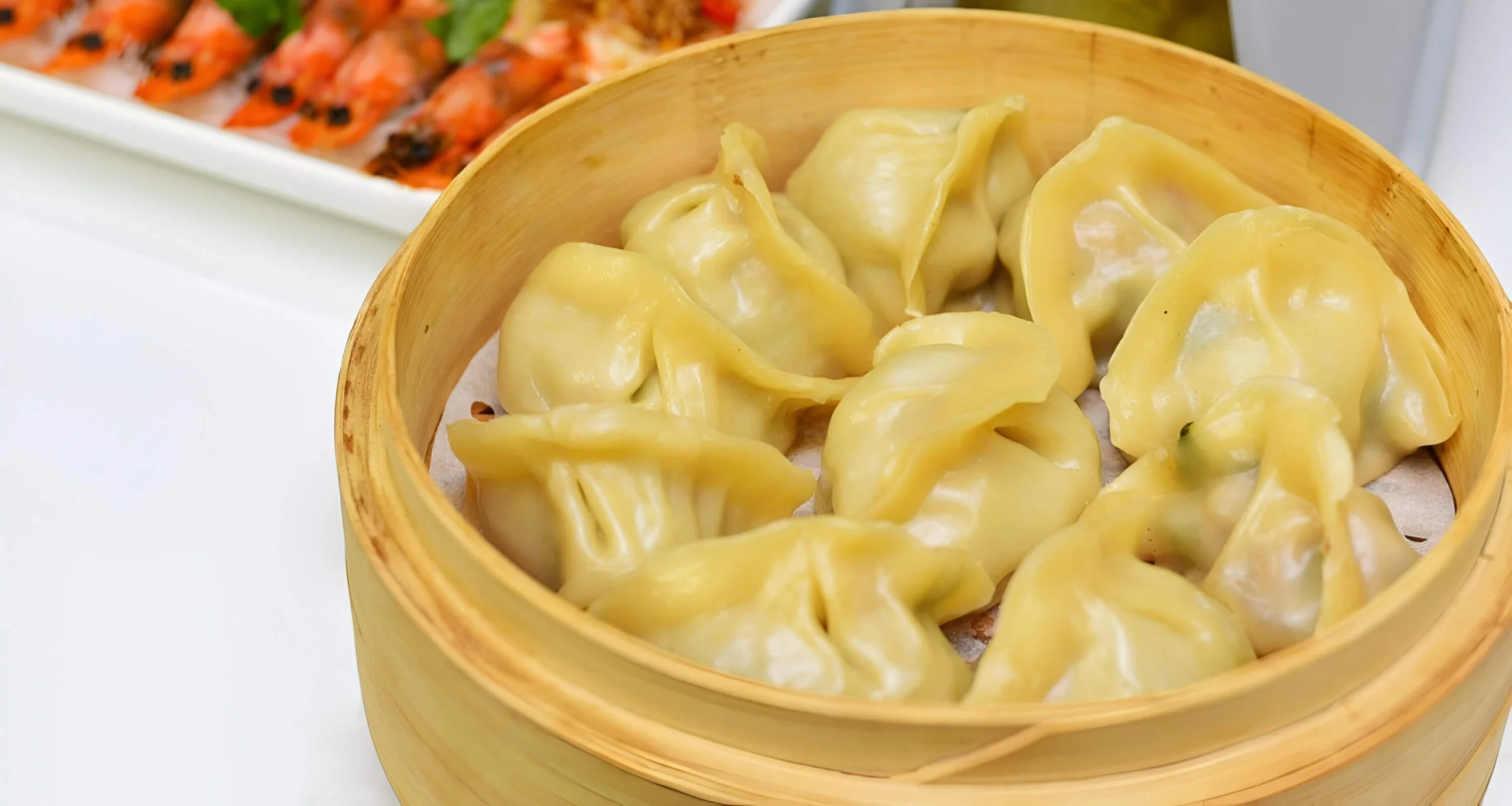Cauliflower Mushroom Hazelnut Soup: 7 Healthy Benefits You’ll Love

Some evenings, you just want something simple that feels like a hug. You might be tired after work or trying to eat better without losing flavor. This Cauliflower Mushroom Hazelnut Soup is perfect. It’s warm, creamy, and packed with real nutrition.
In this healthy soup recipe, cauliflower adds a gentle creaminess. Mushrooms bring depth and umami. Toasted hazelnuts add a buttery crunch and healthy fats. You’ll learn how to make it step by step. You’ll also discover the health benefits of cauliflower and how this Cauliflower Mushroom Hazelnut Soup fits into vegan, gluten-free, and allergy-friendly kitchens.
Key Takeaways
- This Cauliflower Mushroom Hazelnut Soup is a flavorful, nourishing option for busy home cooks.
- Cauliflower Mushroom Hazelnut Soup benefits include vitamins, fiber, and low-carb flexibility.
- Cauliflower Mushroom Hazelnut Soup blends immune-boosting mushrooms with hazelnuts, which are high in vitamin E.
- The article will guide you step-by-step and include vegan, gluten-free, and nut-free variations.
- Expect practical tips for texture, seasoning, and meal planning to fit your diet and schedule.
Why Cauliflower Mushroom Hazelnut Soup Is a Must-Try for Your Healthy Kitchen
This Cauliflower Mushroom Hazelnut Soup is special because it combines simple ingredients with bold flavors. It has a nutty taste from hazelnuts, a savory umami from mushrooms, and a mild sweetness from cauliflower. This mix creates a refined taste that’s perfect for any meal.
Texture is key to enjoying this Cauliflower Mushroom Hazelnut Soup. The smooth base gives a creamy feel, while chopped mushrooms or crunchy hazelnuts add a nice contrast. This balance keeps every spoonful exciting and prevents the soup from being too one-dimensional.
How this Cauliflower Mushroom Hazelnut Soup fits into a health-focused diet
This recipe can be tailored to fit different dietary needs. You can make it lower in carbs by using more cauliflower. Hazelnuts add healthy fats and vitamin E, unlike heavy cream. Mushrooms also bring nutrients that boost your immune system. It’s a great choice for a healthy, plant-based meal.
Who should consider adding it to their meal rotation
- People aiming for weight management who want filling, low-calorie options.
- Followers of Mediterranean, plant-forward, or vegetarian patterns seeking hearty soups.
- Anyone focused on functional foods that deliver vitamins, fiber, and healthy fats in an easy format.
- Busy cooks who want a versatile dish for weekly meal rotation that reheats well and pairs with salads or whole-grain toast.
Key Ingredients and Their Nutritional Benefits
This Cauliflower Mushroom Hazelnut Soup is made with simple, healthy ingredients. They come together for great taste and health benefits. Each ingredient is chosen for its nutritional value and flavor.
Cauliflower: vitamins, fiber, and low-carb advantages
Cauliflower is packed with vitamin C and K, folate, and fiber. It’s also low in carbs, making it a good choice for those watching their carb intake. The fiber helps with digestion and keeps blood sugar stable.
Its mild taste lets you focus on herbs and spices. This way, you can enjoy a variety of flavors without any overpowering notes.
Mushrooms: immune support and micronutrients
Mushrooms such as cremini, shiitake, and button are rich in riboflavin, niacin, selenium, and potassium. They also have compounds that boost your immune system.
They’re low in calories but high in umami. This means they add depth to your soup without needing extra salt.
Hazelnuts: healthy fats, vitamin E, and antioxidants
Hazelnuts are rich in healthy fats, vitamin E, magnesium, copper, and antioxidants. These nutrients are good for your heart and protect against damage.
When blended, hazelnuts make your Cauliflower Mushroom Hazelnut Soup creamy. They can also promote a feeling of fullness, helping you stay satisfied with fewer calories.
Broth, aromatics, and seasoning: how they contribute to nutrition
Using low-sodium vegetable or chicken broth keeps your soup flavorful without too much salt. Vegetable broth adds minerals and a clear base that complements plant-based ingredients.
Onion, garlic, and leek add vitamins and minerals with almost no calories. Fresh thyme and bay leaf enhance the aroma and add extra nutrients.
Seasonings like black pepper and lemon juice boost the flavors. A drizzle of extra-virgin olive oil adds healthy fats and richness.
| Ingredient | Key Nutrients | Primary Benefit | How to Use in Soup |
|---|---|---|---|
| Cauliflower | Vitamin C, Vitamin K, Folate, Fiber | Low-carb base; supports digestion | Roast or simmer then puree for creamy texture |
| Mushrooms (cremini, shiitake, button) | Riboflavin, Niacin, Selenium, Potassium, Beta-glucans | Adds umami and immune support | Sauté before simmering to deepen flavor |
| Hazelnuts | Monounsaturated fats, Vitamin E, Magnesium, Copper, Polyphenols | Heart-healthy fats and creamy mouthfeel | Toast, then blend into the soup or use as garnish |
| Broth (vegetable or low-sodium chicken) | Minerals, low calories (when low-sodium) | Flavorful liquid base with controlled sodium | Use as cooking medium and adjust concentration |
| Aromatics & Seasoning | Phytochemicals, trace vitamins | Adds depth without calories | Sauté onion/garlic; finish with lemon zest and olive oil |
How to Make Cauliflower Mushroom Hazelnut Soup at Home
This Cauliflower Mushroom Hazelnut Soup recipe is easy to follow. You can easily create a creamy, dairy-free soup without any extra effort. Just read the ingredient list, substitution options, cooking method, and hazelnut toasting tips before starting.
- Cauliflower head (about 1.5–2 lb)
- 8–10 oz mushrooms (cremini or shiitake)
- 1/2–3/4 cup toasted hazelnuts (plus extra for garnish)
- 1–2 tbsp olive oil or vegan butter
- 1 medium onion or leek
- 2–3 cloves garlic
- 4 cups low-sodium vegetable or chicken broth
- 1 tsp thyme (or a few sprigs)
- Salt, pepper, lemon juice to finish
- Optional garnishes: whole hazelnuts, sautéed mushroom slices, parsley, drizzle of extra virgin olive oil
Substitutions for dietary needs
- For dairy-free or vegan: keep olive oil or use Miyoko’s vegan butter.
- Nut-free swap: use toasted sunflower seeds or roasted pumpkin seeds instead of hazelnuts.
- Lower FODMAP: use garlic-infused oil and leek greens or chives instead of onion and garlic.
- Mushroom choice: cremini, shiitake, or button work depending on availability.
- Vegetable swap: replace cauliflower with broccoli for a different flavor profile.
Step-by-step method for a creamy texture without cream
- Heat olive oil in a heavy pot. Cook chopped onion or leek in a pan until it becomes soft and translucent.
- Add garlic briefly, then add sliced mushrooms. Brown mushrooms until they release and reduce their liquid to concentrate flavor.
- Toss in cauliflower florets and cover with broth. Stir in thyme and a bay leaf if desired, then simmer until the cauliflower is tender, about 12–15 minutes.
- Remove woody thyme stems and bay leaf. Work in batches in a high-speed blender or use an immersion blender until smooth.
- Blend toasted or ground hazelnuts into the soup or make a quick hazelnut milk by pulsing nuts with warm broth then stirring back into the pot. This step gives you a dairy-free creamy soup texture and body.
- Finish with lemon juice, salt, and pepper. Adjust seasoning and texture with a splash of warm broth if too thick.
Hazelnut toasting tips for maximum flavor
- Dry-toast hazelnuts in a skillet over medium heat, shaking often until fragrant and skins blister.
- Transfer to a clean kitchen towel and rub to remove loose skins if you prefer a cleaner nut flavor.
- Chop or pulse in a food processor to the texture you need: paste for creaminess, coarse for garnish.
- Use these hazelnut toasting tips to draw oils and deepen the nutty notes that make the soup taste richer.
Make-ahead soup storage and reheating
- Cool soup completely before refrigerating. Store in airtight containers up to 4 days.
- Freeze portions for 2–3 months in individual containers. Thaw overnight in the refrigerator.
- Reheat gently on the stovetop and thin with a splash of warm broth if the soup thickens. Taste and re-season after reheating.
- Label containers with the date to track freshness and follow best practices for make-ahead soup storage.
Seven Healthy Benefits You’ll Love

This soup of cauliflower, mushrooms, and hazelnuts is rich in nutrients and full of health benefits. It’s full of fiber, minerals, and healthy fats. These ingredients make it a great addition to your daily meals. Here are seven health benefits you can gain from this Cauliflower Mushroom Hazelnut Soup.
Benefit: Supports digestion and gut health
Cauliflower and mushrooms are rich in dietary fiber and prebiotics. These help your gut bacteria and keep your digestion regular. They also slow down glucose absorption, giving you steady energy.
Benefit: Boosts immune function
Mushrooms have beta-glucans and B vitamins that boost your immune system. Cauliflower adds vitamin C and minerals. These support your immune system during seasonal changes.
Benefit: Promotes heart health with healthy fats
Hazelnuts are full of monounsaturated fats and vitamin E. These fats help balance your cholesterol levels. Adding olive oil to the soup makes it even better for your heart.
Benefit: Helps with weight management and satiety
This low-calorie soup is filling without being heavy. Hazelnuts add protein and fat, keeping you full longer. This helps you eat less at other meals.
Benefit: Provides antioxidants and anti-inflammatory compounds
Hazelnuts, mushrooms, and cauliflower are full of antioxidants. These compounds reduce oxidative stress and inflammation. They support a balanced diet.
Benefit: Supports bone and brain health with key minerals
This Cauliflower Mushroom Hazelnut Soup is a good source of calcium, magnesium, phosphorus, and vitamin K.. These minerals are good for your bones. B vitamins and healthy fats also support your brain and energy levels.
Benefit: Versatile for many dietary patterns
This Cauliflower Mushroom Hazelnut Soup can be easily adapted to suit a variety of dietary preferences. It’s vegan, gluten-free, low-carb, or paleo with simple changes. This makes it easy to enjoy its health benefits, no matter your diet.
Calories, Macros, and Portion Guidance
Knowing the nutrition of cauliflower mushroom hazelnut soup helps you plan your meals. You’ll find estimated values, tips for adjusting portions, and ideas for pairing the soup.This approach helps you maintain balanced meals without the need for guesswork.
Estimated nutrition per serving
A 1.5–2 cup serving has about 180 to 300 calories. It contains 5–8 g of protein and 12–20 g of fat. Most of the fat comes from hazelnuts and olive oil. Carbohydrates are 12–20 g, with 4–7 g of fiber.
For exact macros, use a nutrition calculator with your specific brands and amounts.
How to adjust portions for weight loss or maintenance
To cut calories and fat, use fewer hazelnuts or oil. Add more broth and cauliflower to keep the portion size up. For more protein, add grilled chicken or tofu.
Practice portion control by measuring a standard 1-cup serving. Opt for smaller bowls to help control portion sizes when necessary.
Balancing this Cauliflower Mushroom Hazelnut Soup with other meals during the day
On weight-loss days, pair the soup with a high-protein salad or steamed greens. This keeps you full without extra carbs. For maintenance, serve it with whole-grain toast or quinoa for complex carbs.
After workouts, top the soup with shredded chicken or Greek yogurt. This boosts recovery.
| Serving Size | Calories (approx.) | Protein (g) | Fat (g) | Carbs (g) | Fiber (g) | Best Adjustment for Goal |
|---|---|---|---|---|---|---|
| 1 cup | 120–200 | 4–6 | 8–14 | 8–14 | 3–5 | Reduce hazelnuts/oil for weight loss |
| 1.5–2 cups | 180–300 | 5–8 | 12–20 | 12–20 | 4–7 | Add protein for maintenance/recovery |
| 2 cups + whole-grain side | 350–500 | 12–20 | 14–24 | 40–60 | 6–10 | Good for balanced meals or active days |
Vegan, Gluten-Free, and Allergy-Friendly Variations

Make this cauliflower Cauliflower Mushroom Hazelnut Soup fit many diets without losing its creamy, savory charm. Below are practical swaps and precautions that keep flavor high and risk low for common allergies and preferences.
Making the recipe fully vegan and dairy-free
To keep the pot strictly plant-based, use extra-virgin olive oil or vegan butter for sautéing. Choose a high-quality vegetable broth as the cooking liquid. Blend toasted hazelnuts into the soup for natural richness instead of cream. For a cheesy umami lift, stir in nutritional yeast near the end of cooking. These changes turn the dish into a hearty vegan soup that feels indulgent.
Gluten-free considerations and substitutions
Confirm that packaged items such as vegetable broth and nutritional yeast are labeled gluten-free. Skip wheat-based thickeners and crouton toppings that add gluten. If you want crunch, use certified gluten-free breadcrumbs or serve the soup with gluten-free bread. These choices align the recipe with gluten-free recipes commonly used by people with celiac disease or wheat sensitivity.
Nut-free alternatives if you’re allergic to hazelnuts
If tree-nut allergy is a concern, replace hazelnuts with toasted sunflower seeds or pumpkin seeds (pepitas). For a creamy texture, blend toasted sunflower seeds with warm water into a smooth paste before adding to the soup. Soaked cashews create a silky result but contain tree nuts, so avoid them when a true nut-free substitute is required. Be mindful of cross-contact risks in home and commercial kitchens; anyone with a tree-nut allergy should avoid hazelnuts completely.
Other allergy and sensitivity notes
For low-FODMAP needs, use garlic-infused oil and reduce or skip onion, or rely on the green parts of chives and leeks for aroma. If you manage histamine sensitivity, prefer freshly cooked ingredients and avoid long-simmered broths to lower possible triggers. Small adjustments let you enjoy this Cauliflower Mushroom Hazelnut Soup while staying safe and comfortable.
Pairing Suggestions: What to Serve with This Soup
Find companions that match the cauliflower mushroom hazelnut soup’s rich flavor and smooth texture. Good soup pairings can make your meal better, whether it’s a light lunch or a warm dinner.
Healthy bread and sandwich ideas
For a good bread choice, go for whole-grain sourdough or seeded bread. They add chew and depth. If you need something without wheat, a gluten-free baguette is a great option.
Try an open-faced sandwich with mashed avocado and smoked turkey for extra protein. For a plant-based meal, a whole-grain grilled cheese with vegan cheese is comforting and balanced.
Fresh salads and vegetable accompaniments
Opt for crisp, vibrant salads to provide a refreshing contrast to the creamy soup. A green salad with arugula, spinach, or mixed greens in lemon vinaigrette adds a nice acidity. Roasted root vegetables make the meal more filling and match the soup’s roasted flavors.
For a different taste, serve a citrusy fennel salad. It brings out the hazelnut and mushroom flavors.
Beverage choices to match the meal
Choose drinks that fit the meal’s mood. For dinner, a light white wine like Pinot Grigio or a dry Riesling goes well with the soup’s flavors. For lunch or non-alcoholic drinks, sparkling water with lemon, unsweetened iced tea, or ginger kombucha refreshes your taste.
Experiment with different bread, salad, and drink pairings to make your meals feel special and satisfying.
Seasonal and Budget-Friendly Ingredient Tips
Shopping for seasonal produce can save you money and taste better. Cauliflower and many mushrooms are sweeter and firmer in fall and winter. Look for them at farmers markets, CSA boxes, and local stores for freshness.
Buying whole heads of cauliflower and trimming them at home saves money. Pre-cut florets are more expensive and spoil faster. When selecting mushrooms, choose those with firm stems and dry caps. Store them in paper bags in the fridge to keep them fresh longer.
Shopping seasonal cauliflower and mushrooms
Choose cauliflower with tight, creamy curds and no brown spots. Mixing mushroom types like button and cremini is cost-effective and flavorful. Visit farmers markets late morning for discounts.
Cost-saving hacks without sacrificing nutrition
Toasting hazelnuts in bulk and freezing them saves money. Buying nuts and seeds from bulk bins is cheaper. Making vegetable broth from scraps is a nutritious and budget-friendly soup base.
When to choose fresh vs frozen ingredients
Frozen cauliflower is just as nutritious as fresh and often cheaper. Toss frozen florets straight into the pot for faster cooking. Frozen mushrooms are rare and lose texture; sauté fresh ones for better taste.
| Ingredient | Best Buy When | Storage Tip | Budget Hack |
|---|---|---|---|
| Cauliflower | Fall–winter peak | Keep whole in crisper, use within 5–7 days | Buy whole heads, trim at home |
| Button & Cremini Mushrooms | Year-round, cheaper in-season at markets | Store in paper bag in fridge, use within 4–7 days | Mix varieties to stretch flavor, watch sales |
| Frozen Cauliflower | When fresh is pricey or out of season | Keep frozen until use; add straight to pot | Often cheaper per pound than fresh |
| Hazelnuts | Buy in bulk or on sale | Refrigerate or freeze toasted nuts for weeks | Use seeds (sunflower) as lower-cost substitute |
| Homemade Broth | Any time you have scraps | Freeze in portions for later use | Reduces need for store-bought stock |
How This Soup Fits into Popular Diets and Lifestyle Plans
This Cauliflower Mushroom Hazelnut Soup fits many eating styles. You can adjust it for low-carb diets, Mediterranean eating, or busy weeks with simple changes.
Keto, paleo, and low-carb considerations:
For a keto soup, use cauliflower as the main ingredient. Limit starchy ingredients and choose olive oil or ghee. Reduce hazelnuts for fewer calories and carbs. Use unsweetened broth to keep carbs low.
For a paleo soup, pick pasture-raised broth and avocado oil. Use only unprocessed ingredients.
Mediterranean and plant-forward diet compatibility:
This soup fits the Mediterranean diet with its veggies, olive oil, and herbs. Add whole-grain bread or a bean salad for a Mediterranean touch. For plant-based meals, use vegetable broth and more mushrooms for flavor and nutrients.
Meal prep and time-saving strategies for busy lifestyles:
Prepare a large batch and freeze portions for convenient future meals. Toast hazelnuts and sauté mushrooms ahead of time. Use a blender for quick pureeing.
Freezing cauliflower and using bouillon cubes save time. They make meal prep faster.
Here’s a quick guide to adjust the soup for your diet.
| Goal | Key Swap | Why It Helps |
|---|---|---|
| Keto or low-carb | Reduce hazelnuts, use bone broth | Lowers net carbs and adds savory fat for satiety |
| Paleo-friendly | Use ghee or avocado oil, avoid processed stock | Keeps ingredients compliant and nutrient-dense |
| Mediterranean diet | Extra virgin olive oil and fresh herbs | Boosts heart-healthy fats and flavor profile |
| Meal prep focus | Portion, freeze, toast garnish separately | Preserves texture and speeds weekday meals |
Make these changes to fit your diet and taste. Small tweaks make this soup work for keto, paleo, Mediterranean, or meal prep. It stays flavorful and nutritious.
Common Mistakes and Troubleshooting While Cooking
When your Cauliflower Mushroom Hazelnut Soup goes wrong, quick fixes can save dinner. Follow these tips for easy soup troubleshooting. They help fix flavor and texture without stress.
How to avoid a watery or bland soup
Don’t add too much broth. Brown mushrooms and sauté onions, garlic, and celery until they’re colored. This adds depth. If it’s too thin, simmer to reduce and concentrate flavors.
Choose a good low-sodium or homemade broth. This way, you control the salt and richness.
Fixes for grainy texture or overcooked vegetables
Grainy soup often comes from overcooked cauliflower or hazelnuts. Blend longer in a high-speed blender. Next, strain the puree through a fine-mesh sieve to achieve a silky texture.
If it’s too sandy, mix in a bit of full-fat coconut milk or unsweetened plant milk. This improves the mouthfeel.
Rescuing overcooked, mealy veg
For mushy veggies, add fresh contrast. Toss raw cauliflower florets or sautéed mushroom slices with lemon and olive oil. Use them as a garnish. This adds texture and brightens the dish.
Adjusting seasoning and acidity for balance
Always taste after blending because flavors concentrate differently. Add a little acid like lemon juice or sherry vinegar. This lifts the flavor.
Correct salt slowly and finish with black pepper, nutmeg, or smoked paprika. These seasoning tips help avoid bland soup and create a rich final taste.
- Check cauliflower early for doneness to prevent overcooking.
- Toast hazelnuts until fragrant and process until fine to avoid grit.
- Reduce liquid over medium heat instead of using thickeners that mask flavor.
Conclusion
You now know why cauliflower mushroom hazelnut soup is great for your kitchen. This summary covers the recipe, its health benefits, and how to make it vegan, gluten-free, or nut-free. It also shows how to achieve a creamy texture and store the soup for later.
Try the recipe and experiment with different flavors. You can add more mushrooms for a deeper taste. Use pumpkin seeds or sunflower seeds instead of walnuts for a nut-free option. Adjust the herbs and acid to your liking.
This soup is packed with nutrients and can be part of a balanced meal. Pair it with whole grains, salads, or lean proteins for extra health benefits. Save the recipe, share it, or bookmark it for future meals. It’s a simple way to enjoy a healthy, nourishing dish.
FAQ
What makes Cauliflower Mushroom Hazelnut Soup a healthy choice?
This Cauliflower Mushroom Hazelnut Soup is packed with nutrients. It has cauliflower for fiber and vitamin C. Mushrooms add B vitamins and selenium. Hazelnuts bring heart-healthy fats and vitamin E.Together, they make a filling, nutritious bowl. They support digestion, immune function, and keep you full. Plus, they replace heavy cream-based soups.
Is it possible to adapt this soup to be vegan, gluten-free, or nut-free?
Yes, you can make it vegan and dairy-free. Use olive oil or vegan butter and low-sodium vegetable broth. Blend hazelnuts for creaminess or use nutritional yeast for extra umami.For a gluten-free version, use certified gluten-free ingredients and avoid wheat-based thickeners. For a nut-free option, use toasted sunflower seeds or pumpkin seeds blended into a paste. Or, use soaked cashews if you can tolerate tree nuts other than hazelnuts.
How do you get creamy texture without cream?
Sauté onions and mushrooms until deeply browned to enhance flavor. Simmer the cauliflower until soft, then blend until smooth. Process toasted hazelnuts into a paste or a coarse nut milk and mix it in for added creaminess and richness. Using an immersion blender or high-speed blender yields the silkiest result. Finish with a splash of olive oil and lemon juice to round flavors.
Which mushroom varieties work best and why?
Cremini, shiitake, and button mushrooms are excellent choices. Cremini and shiitake bring deeper umami and extra texture when sautéed. Button mushrooms are mild and budget-friendly.A mix of varieties gives complexity and helps reduce the need for added salt.
How should you toast and prepare hazelnuts for the soup?
Toast hazelnuts in a dry skillet over medium heat, shaking often, until they become fragrant and slightly blistered. Rub them in a clean towel to remove loose skins if desired, then chop or pulse in a food processor to a paste or coarse texture.Toasting intensifies oils and flavor, improving creaminess when blended into the soup.
What are easy substitutions if you don’t have hazelnuts or are allergic?
Use toasted sunflower seeds or pumpkin seeds blended with warm water as a nut-free creaminess substitute. Soaked cashews provide a creamy, velvety texture, perfect if you don’t have a tree nut allergy.For lower cost, ground almonds or tahini also add body but change the flavor profile.
How many calories and macros are in a typical serving?
A 1.5–2 cup serving typically ranges from about 180–300 calories. It has roughly 5–8 g protein, 12–20 g fat (mostly unsaturated), 12–20 g carbohydrates, and 4–7 g fiber.Exact values depend on the hazelnut and oil amounts and the broth you choose. Use a nutrition calculator for precise tracking with your brands and portions.
What are some ways to adjust serving sizes for weight loss or maintenance?
To reduce calories, lower the hazelnut or oil amounts and increase cauliflower and broth to keep volume. For maintenance or added protein, serve with grilled chicken, baked tofu, or a whole-grain side like quinoa.Always monitor sodium by choosing low-sodium broth or homemade stock.
What are the best make-ahead and storage practices?
Allow the soup to cool fully, then store it in an airtight container in the refrigerator for up to 4 days. Freeze portions for 2–3 months. Reheat gently on the stovetop, adding a splash of warm broth if the soup has thickened.Store hazelnut garnish and sautéed mushroom slices separately to preserve texture.
How do you prevent a watery or bland soup?
Brown mushrooms and sauté aromatics to build depth. Avoid adding too much broth at once—start with less and thin as needed. Reduce the soup slightly to concentrate flavors.Taste after blending, adding acid (lemon juice or sherry vinegar), salt, and pepper gradually to balance.
What fixes help if the soup is grainy or mealy after blending?
Graininess can result from overcooked cauliflower or under-processed hazelnuts. Blend longer in a high-speed blender and strain through a fine-mesh sieve if needed. Stir in a small amount of full-fat coconut milk or unsweetened plant milk to smooth texture, then re-season.
How does this soup support immune and gut health?
Cauliflower supplies fiber and vitamin C, supporting digestion and immune cell function. Mushrooms contain beta-glucans and B vitamins that modulate immune response. Dietary fiber feeds beneficial gut bacteria and helps regulate blood glucose, contributing to overall metabolic and digestive health.
Is this recipe suitable for keto or low-carb diets?
It can be adapted for low-carb or keto by keeping cauliflower as the base. Reduce hazelnut and oil amounts to lower total fats and calories as needed. Monitor portion sizes. For strict keto, limit added nuts and increase nonstarchy vegetable volume while keeping total carbs in your target range.
What are good pairings to serve with the soup?
Pair with whole-grain sourdough, seeded bread, or a simple arugula salad dressed with lemon vinaigrette. For more protein, serve alongside grilled chicken, smoked turkey, or a tofu-based sandwich. Drink pairings can include Pinot Grigio, dry Riesling, sparkling water with a squeeze of lemon, or unsweetened iced tea.
When is it okay to use frozen cauliflower and how does it affect the outcome?
Frozen cauliflower is a cost-effective, nutritious option. Add it straight to the pot and adjust cooking time—frozen cauliflower may release more water, so simmer to concentrate flavor or reduce liquid slightly. Texture remains good when blended, and it saves prep time on busy nights.
Add a Dash of Your Thoughts!
There are no reviews yet. Be the first one to write one.






